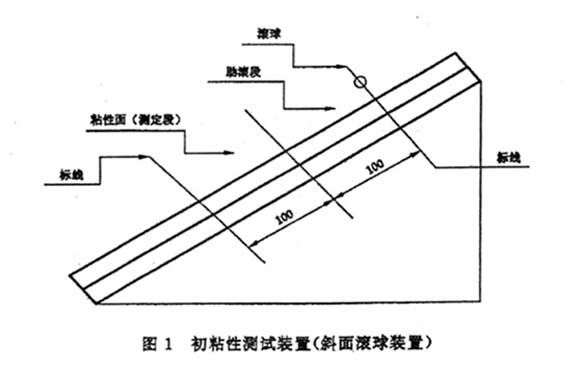Under normal circumstances, the initial adhesion tester is also known by the industry as a preliminary adhesion tester or tape adhesive tester, which has a positive effect on the scientific detection of the adhesive products industry. The test method for the initial tack tester is a problem that many enterprises and institutions want to figure out clearly.
Below, Jinan Saicheng's self-developed "CZY-G initial viscosity tester" as an example, combined with the initial tack tester test principle and standard GB/T4852-2002 "pressure sensitive adhesive tape initial tack test method (rolling ball method) ", a comprehensive interpretation of its scientific test methods.
Test principle
GB/T4852-2002 " Pressure-adhesive tape initial tack test method (rolling ball method)", requires that the initial tack tester must have both the A method bevel ball method and the B method chute ball method. Unless the special test requirements, the A method is generally selected for testing.
Among them, the test principle for the A method bevel rolling ball method is: when the steel ball and the pressure sensitive tape sample are briefly contacted by a slight pressure, the adhesion of the adhesive tape to the steel ball is used to test the initial sample. viscosity.

Test Methods
1. Adjust the inclined ball rolling device to the horizontal position. Adjust the inclination of the inclined plate to 30° unless otherwise specified.
2. Wipe the surface of the glass and both sides of the polyester film with the absorbent gauze with the cleaning agent, and then wipe it clean with gauze.
3. The steel ball of the anti-rust oil will be wiped off and thoroughly cleaned. The cleaned steel balls are gripped with tools such as clean bamboo (wood, bone) tweezers.
4. Place the adhesive tape sample on the inclined plate with the adhesive side facing up.
5. Fix the sides of the roller section and the lower end of the specimen to the inclined plate with adhesive.
6. Use a pair of tweezers to clamp the steel ball into the ball ejector and adjust the front and rear position of the ball ejector so that the trajectory of the steel ball does not coincide. When the width of the sample is larger than 25 mm, the area 25 mm wide at the center of the sample is the effective test area.
7, pre-selected zui big steel ball. First, gently open the ball ejector and observe if the rolled steel ball is stuck in the test section (stop moving for less than 5 s). Then take the two balls of the above-mentioned zui big ball steel ball and the ball number, and perform a test on the same sample to confirm the steel ball of the Zui big ball.
After the preparation work is completed, the experiment is officially started: take 3 samples and perform a ball test with each of the Zui big ball steel balls. If a sample does not stick to the steel ball, it can be replaced with a ball that is only smaller than its steel ball. If it still cannot be stuck, it must be retested according to 1-3.
For more information on the technical parameters, characteristics and application principles of the "CZY-G Initial Viscosity Tester ", please call Jinan Saicheng Technology directly!
We are a supplier of high-speed rapier looms and flexible rapier looms. The company specializes in selling second-hand rapier looms and economical rapier looms. Chinese second-hand rapier looms look for Tianchi.
Second-Hand Rapier Loom,High-Speed Rapier Loom,Flexible Rapier Loom,Rapier Loom
Changzhou Satidi Import and Export Co., Ltd. , https://www.guanjiejts.com